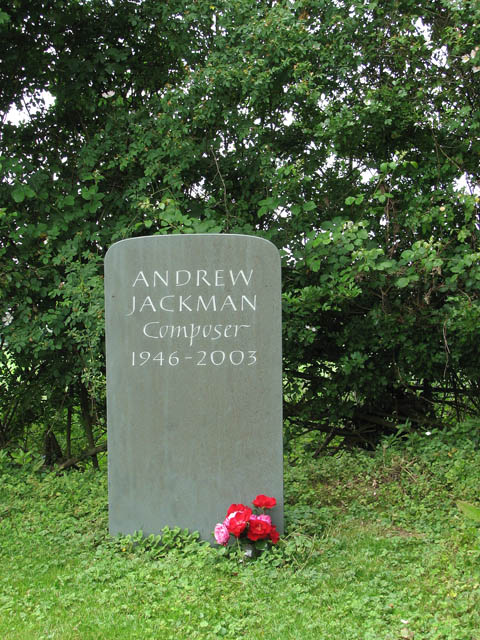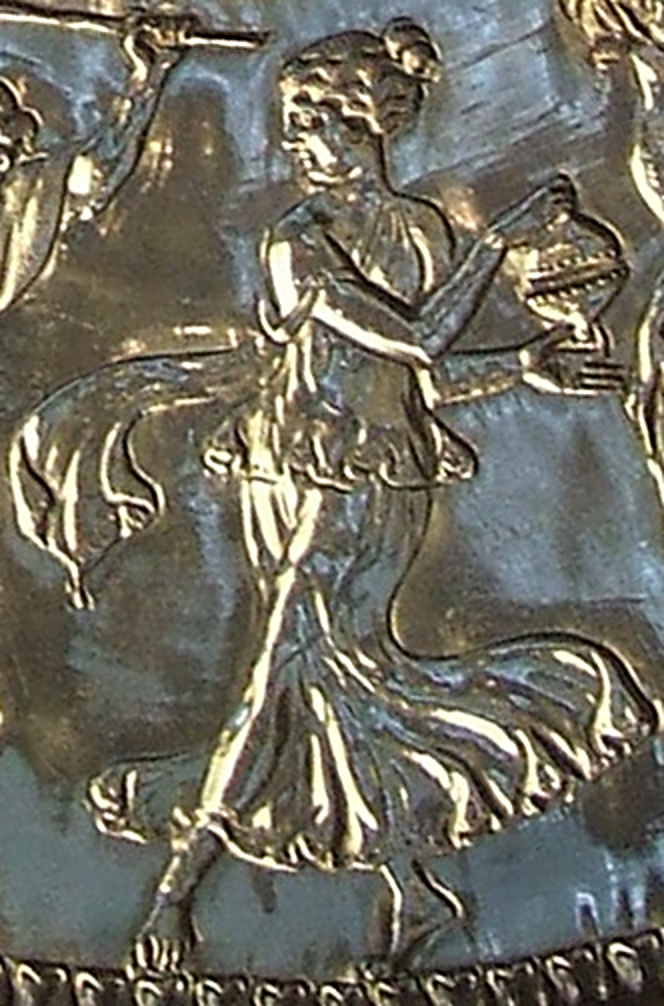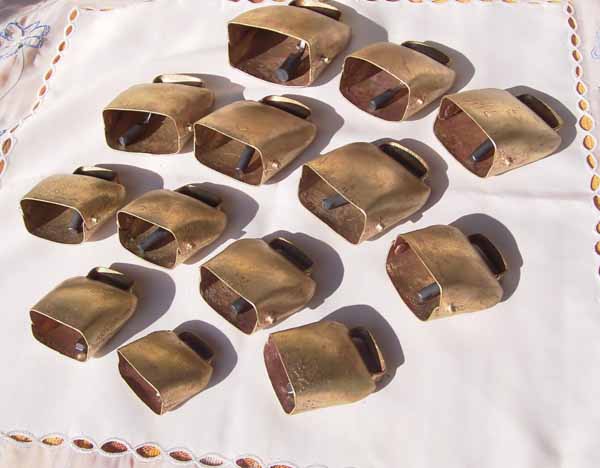|
On A Wing And A Prayer
''On a Wing & a Prayer'' is the seventh studio album by Gerry Rafferty. The album includes three tracks co-written with Rafferty’s brother Jim, also a singer-songwriter, who had been signed to Decca Records in the 1970s. The music was heavily influenced by Rafferty's divorce from his wife Carla Ventilla in 1990. They were married for 20 years. Track listing All tracks composed by Gerry Rafferty; except where indicated. #"Time's Caught Up on You" - 4:21 #"I See Red" (Jim Rafferty) - 4:05 #"It's Easy to Talk" - 4:29 #"I Could Be Wrong" - 3:59 #"Don't Speak of My Heart" (Gerry Rafferty, Jim Rafferty) - 5:55 #" Get Out of My Life Woman" (Allen Toussaint) - 4:11 #"Don't Give Up on Me" - 4:59 #"Hang On" - 4:00 #"Love and Affection" - 6:25 #"Does He Know What He's Taken On" - 4:56 #"The Light of Love" (Gerry Rafferty, Jim Rafferty) - 4:57 #"Life Goes On" - 5:22 Personnel * Gerry Rafferty – lead vocals, backing vocals, acoustic guitar (1, 3, 4, 6, 7), high-string guitar (5) ... [...More Info...] [...Related Items...] OR: [Wikipedia] [Google] [Baidu] |
Gerry Rafferty
Gerald Rafferty (16 April 1947– 4 January 2011) was a Scottish singer, songwriter, musician, and record producer. He was a founding member of Stealers Wheel, whose biggest hit was " Stuck in the Middle with You" in 1973. His solo hits in the late 1970s included "Baker Street", "Right Down the Line", and " Night Owl". Rafferty was born into a working-class family in Paisley, Renfrewshire, Scotland. His mother taught him both Irish and Scottish folk songs when he was a boy; later, he was influenced by the music of the Beatles and Bob Dylan. He joined the folk-pop group the Humblebums (of which Billy Connolly was a member) in 1969. After they disbanded in 1971, he recorded his first solo album, ''Can I Have My Money Back?''. Rafferty and Joe Egan formed the group Stealers Wheel in 1972 and produced several hits, most notably "Stuck in the Middle with You" and "Star". In 1978, he recorded his second solo album, ''City to City'', which included "Baker Street", his most popular ... [...More Info...] [...Related Items...] OR: [Wikipedia] [Google] [Baidu] |
Fretless Bass
A fretless bass is a bass guitar whose neck does not have any frets. While the instrument is played in all styles of music, it is most common in pop, rock, and jazz. It first saw widespread use during the 1970s, although some players used them before then. Instead of being invented by an instrument manufacturer, the first fretless basses usually resulted from modifications made by bass guitar players. One of the first (if not the first) examples of this is Rolling Stones bassist Bill Wyman, who removed the frets from his bass guitar in 1961 to fix a fret buzz issue. The first fretless bass to be produced by a designated company is the Ampeg AUB1, first released in 1965. Characteristics The lack of frets allows for more fluid slides between notes, but also requires greater precision by the player, as the instrument may sound out of tune if notes are not fretted accurately. Like fretted bass guitars, they can have four, five, six, or even more strings. While some have "fret lines" ... [...More Info...] [...Related Items...] OR: [Wikipedia] [Google] [Baidu] |
Andrew Pryce Jackman
Andrew Pryce Jackman (13 July 1946 – 16 August 2003) was an English keyboardist, arranger and composer who worked with many leading figures in British popular music. His most successful project was as the arranger and conductor of the ''Classic Rock'' series of albums by the London Symphony Orchestra, the first of which reached No 3 in the charts in 1978. Career Jackman began his music career as the keyboard player in The Selfs, a rhythm and blues band formed in 1964 in Wembley, London, also featuring bassist Chris Squire (later of Yes) and drummer Martyn Adelman. The Selfs amalgamated with another band, The Syn, in 1965, led by Steve Nardelli. Nardelli and Jackman became the main songwriters for the band. The Syn broke up in 1967. Jackman went on to concentrate on making orchestral and other arrangements for various bands, such as Peter Skellern (including the distinctive arrangement for brass band and chorus for the 1972 hit You're a Lady), The Congregation, Rush (''Power ... [...More Info...] [...Related Items...] OR: [Wikipedia] [Google] [Baidu] |
Mel Collins
Melvyn Desmond Collins (born 5 September 1947, Isle of Man) is a British saxophonist, flautist and session musician. Collins has played in several progressive rock groups, having been a member of King Crimson on two occasions (the first from 1970 to 1972 and the second from 2013 to the present day) and having played with Camel, the Alan Parsons Project, Roger Waters and Chris Squire. He has also worked in a wide variety of contexts ranging from R&B and blues rock to jazz. Career Collins was born into a family of musicians. His mother was a singer while his father was a saxophonist and session musician who toured with Judy Garland and Shirley Bassey. Collins has worked with a large number of notable recording artists, including 10cc, Alexis Korner, Alvin Lee, Clannad, Eric Clapton, Bad Company, Pino Daniele, Dire Straits, Bryan Ferry, Roger Chapman, Marianne Faithfull, The Rolling Stones, Roger Waters Gerry Rafferty, Tears for Fears, Go West and Joan Armatrading. He was a m ... [...More Info...] [...Related Items...] OR: [Wikipedia] [Google] [Baidu] |
Castanets
Castanets, also known as ''clackers'' or ''palillos'', are a percussion instrument (idiophone), used in Spanish, Kalo, Moorish, Ottoman, Italian, Sephardic, Swiss, and Portuguese music. In ancient Greece and ancient Rome there was a similar instrument called the crotalum. The instrument consists of a pair of concave shells joined on one edge by a string. They are held in the hand and used to produce clicks for rhythmic accents or a ripping or rattling sound consisting of a rapid series of clicks. They are traditionally made of hardwood (chestnut; Spanish: castaño), although fibreglass has become increasingly popular. In practice, a player usually uses two pairs of castanets. One pair is held in each hand, with the string hooked over the thumb and the castanets resting on the palm with the fingers bent over to support the other side. Each pair will make a sound of a slightly different pitch. The origins of the instrument are not known. The practice of clicking hand-held sti ... [...More Info...] [...Related Items...] OR: [Wikipedia] [Google] [Baidu] |
Finger Cymbals
Zills or zils (from Turkish 'cymbals'), also called finger cymbals, are small metallic cymbals used in belly dancing and similar performances. They are called () in Egypt. They are similar to Tibetan tingsha bells. In Western music, several pairs can be set in a frame to make a tambourine. Names in other languages include ''nuqaisāt'' (after the ''naqus'') in Arabic and used among Berbers, ''ṣunnūj ṣaghīra'' in Arabic, ''Zang-e sarangoshti'' (Persian, possibly related to the '' zang''), sanj angshati (سنج انگشتی) (Persian, related to Sanj), ''çeng'' in Turkish, ''p'eng chung'' in Chinese. History Zills, or finger cymbals, are part of a family of musical instruments known as ''clappers''. Clappers are musical instruments made of wood, bone, metal, and other substances that are played by being struck against each other. Clappers come in pairs and are often held in the hands, fastened together, or strapped to the performer's fingers. The clapper family also inc ... [...More Info...] [...Related Items...] OR: [Wikipedia] [Google] [Baidu] |
Agogô
An agogô (Yoruba: ''agogo'', meaning bell) is a single or a multiple bell now used throughout the world but with origins in traditional Yoruba and Edo music and also in the samba '' baterias'' (percussion ensembles). The agogô may be the oldest samba instrument and was based on West African Yoruba single or double bells. The agogô has the highest pitch of any of the bateria instruments. Construction Each bell is a different size. This allows a differently pitched note to be produced depending on which bell has been hit. Originally wrought iron, they are now manufactured in a variety of metals and sizes for different sound qualities. The most common arrangement is two bells attached by a U shaped piece of metal. The smaller bell is held uppermost. Either bell may be hit with a wooden stick to make a cowbell like sound or less commonly a clicking sound is produced by squeezing the two bells together. Origins/History/Evolution The Yoruba, Igala, and Edo peoples of Nigeria use ... [...More Info...] [...Related Items...] OR: [Wikipedia] [Google] [Baidu] |
Cowbell (instrument)
The cowbell is an idiophone hand percussion instrument used in various styles of music, such as Latin and rock. It is named after the similar bell used by herdsmen to keep track of the whereabouts of cows. The instrument initially and traditionally has been metallic; however, contemporarily, some variants are made of synthetic materials. Origins While the cowbell is commonly found in musical contexts, its origin can be traced to freely roaming animals. In order to help identify the herd to which these animals belonged, herdsmen placed these bells around the animal's neck. As the animals moved about the bell would ring, thus making it easier to know of the animal's whereabouts. Though the bells were used on various types of animals, they are typically referred to as "cowbells" due to their extensive use with cattle. Tuned cowbells Tuned cowbells or ''Almglocken'' (their German name, ‘Alm’ meaning a mountain meadow, and ‘Glocken’ bells), sometimes known by the Engli ... [...More Info...] [...Related Items...] OR: [Wikipedia] [Google] [Baidu] |
Shaker (musical Instrument)
The word shaker describes various percussive musical instruments used for creating rhythm in music. They are called shakers because the method of creating the sound involves shaking them – moving them back and forth in the air rather than striking them. Most may also be struck for a greater accent on certain beats. Shakers are often used in rock and other popular styles to provide the ride pattern along with or substituting for the ride cymbal. Types of shaker A shaker may comprise a container, partially full of small loose objects such as beans, which create the percussive sounds as they collide with each other, the inside surface, or other fixed objects inside the container – as in a rainstick, caxixi or egg shaker. See also *Hand percussion Hand percussion is a percussion instrument that is held in the hand. They can be made from wood, metal or plastic, bottles stops and are usually shaken, scraped, or tapped with fingers or a stick. It includes all instruments that a ... [...More Info...] [...Related Items...] OR: [Wikipedia] [Google] [Baidu] |
Conga
The conga, also known as tumbadora, is a tall, narrow, single-headed drum from Cuba. Congas are staved like barrels and classified into three types: quinto (lead drum, highest), tres dos or tres golpes (middle), and tumba or salidor (lowest). Congas were originally used in Afro-Cuban music genres such as conga (hence their name) and rumba, where each drummer would play a single drum. Following numerous innovations in conga drumming and construction during the mid-20th century, as well as its internationalization, it became increasingly common for drummers to play two or three drums. Congas have become a popular instrument in many forms of Latin music such as son (when played by conjuntos), descarga, Afro-Cuban jazz, salsa, songo, merengue and Latin rock. Although the exact origins of the conga drum are unknown, researchers agree that it was developed by Cuban people of African descent during the late 19th century or early 20th century. Its direct ancestors are thought to be ... [...More Info...] [...Related Items...] OR: [Wikipedia] [Google] [Baidu] |
Tom Drum
A tom drum is a cylindrical drum with no snares, named from the Anglo-Indian and Sinhala language. It was added to the drum kit in the early part of the 20th century. Most toms range in size between in diameter, though floor toms can go as large as . It is not to be confused with a tam-tam, a gong. Design history The drum called "Thammattama", played by the Sinhala people of Sri Lanka, is used in a number of Buddhist rituals in that country. It is commonly heard in Buddhist temples paired along with the reed instrument called horanava. This may be etymologically derived from the Tamil term "Thappattam" or "Thappu", a frame drum associated with South Indian Tamil culture. However, the tom-tom drums on the Western drum set clearly resemble the Sri Lankan version more than the frame drum. The British colonists complained loudly about the noise generated by the "tom-toms" of the natives throughout South Asia. It is likely that the term tom-toms thus comes from their experiences ... [...More Info...] [...Related Items...] OR: [Wikipedia] [Google] [Baidu] |







